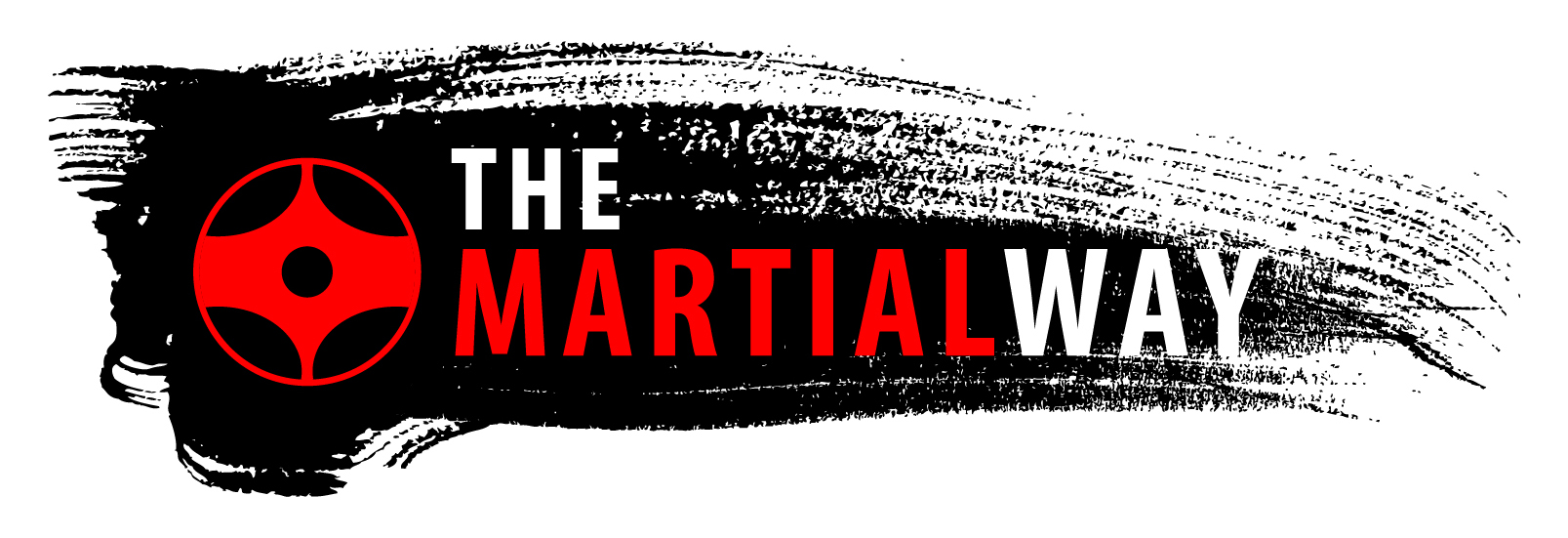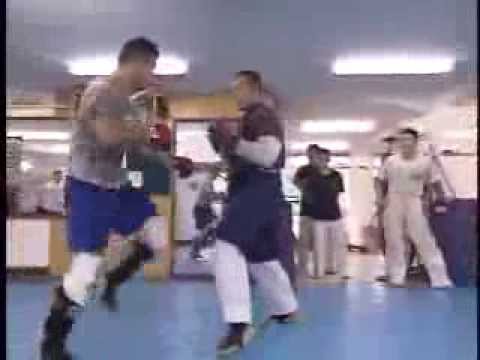I have been off training for over a week due to moving, and having a nasty cold. I returned on Friday, and it felt really good to back at Contact Kicks Dojo with everyone. Friday’s at our dojo, like most Kyokushin dojo’s, really concentrates on kumite. It’s often referred to as “fight night“. This friday was no different.
We began with fight drills under the instruction of Sensei Fogarasi. In shin guards and gloves with light contact. Gets our blood moving while working technique. Not long after we began sparing 3 min rounds, rotating fighters between each round after a min rest.
Having been off for a while, I definitely found it a little tough. Mostly because I wasn’t fully recovered and found it hard to get full air into my lungs, and wanting to cough. Other than that, it felt awesome to be back!
As the fights progressed, after about 20 mins I eventually was paired with a Shodan, who is preparing to test for his Nidan. Already a very intense fighter as it is, I think he was probably a little more so because of the preparation of the upcoming 40 fights, taking place after the Seminar with Shihan David Pickthall.
He is obviously much more skilled than me, having trained in Kyokushin for many many years. So, it can be difficult, and most of the time I find myself just defending and surviving, rather than countering. Which is probably as it should be at my level.
As the seconds and mins rolled on I found myself fatiguing and in survival mode. It was at that time that I was struck with a double gedan mawashi-geri just above the left knee, lower thigh. I instantly dropped to the mat. My leg proceeded to freeze and I couldn’t continue.
For the rest of the evening I sat on the side-lines, dreading the drive home, as I drive a manual transmission.
I was sinking into bit of depression, and anger. At myself, and the shodan. Angry at myself, because I didn’t defend it and I wasn’t “tough” enough to absorb the punishment and continue. Angry at him, because I felt at his experience level he should have more control than that. Or, the alternative, he meant it.
I did make it home, after a painful drive. I couldn’t walk that night, but could put weight on it by the next day. Although, I still can’t bend the knee fully.
It left me with a lot of thinking over the weekend and contemplation. Which has brought questions to my mind, that I am putting out there to you all. I welcome your feedback.
Is important to go that heavy in Kyokushin training? And if so, should it be with, or without, padding?
I know there are different schools of thought on this, and it can differ from one geographic region to another. What I am noticing, is a trend in Russia of wearing gear to go full contact in training, including the thighs, so as to work on technique and skills, without having to be in a fully defensive mindset. Thus offering an opportunity to improve.
On the flip side, there are many people and places that believe more in the “old ways”. Going full-out with no padding, which in turn makes you tougher physically and mentally. The draw back though, is high probability of injury, and a shortened career. The body just can’t sustain that for long periods.
It is rare these days to see training like this. Most professional fighters, including MMA, train either with major control, or with full sparring gear, allowing the fighters to go full out.
I am not saying the guy who injured me is bad or wrong. As I am sure it is a combination of fight preparation along with an old-school mentality. What I am asking, is it necessary today? Or perhaps its a combination?
So, I leave to you for thought and discussion. And as I said, I would love to receive feedback on this.
OSU !
Preparing for the Kyokushin Championship of Russia at the legendary club “Cayman”:
Kenji Yamaki and Norichika Tsukamoto Kyokushin Sparring :

